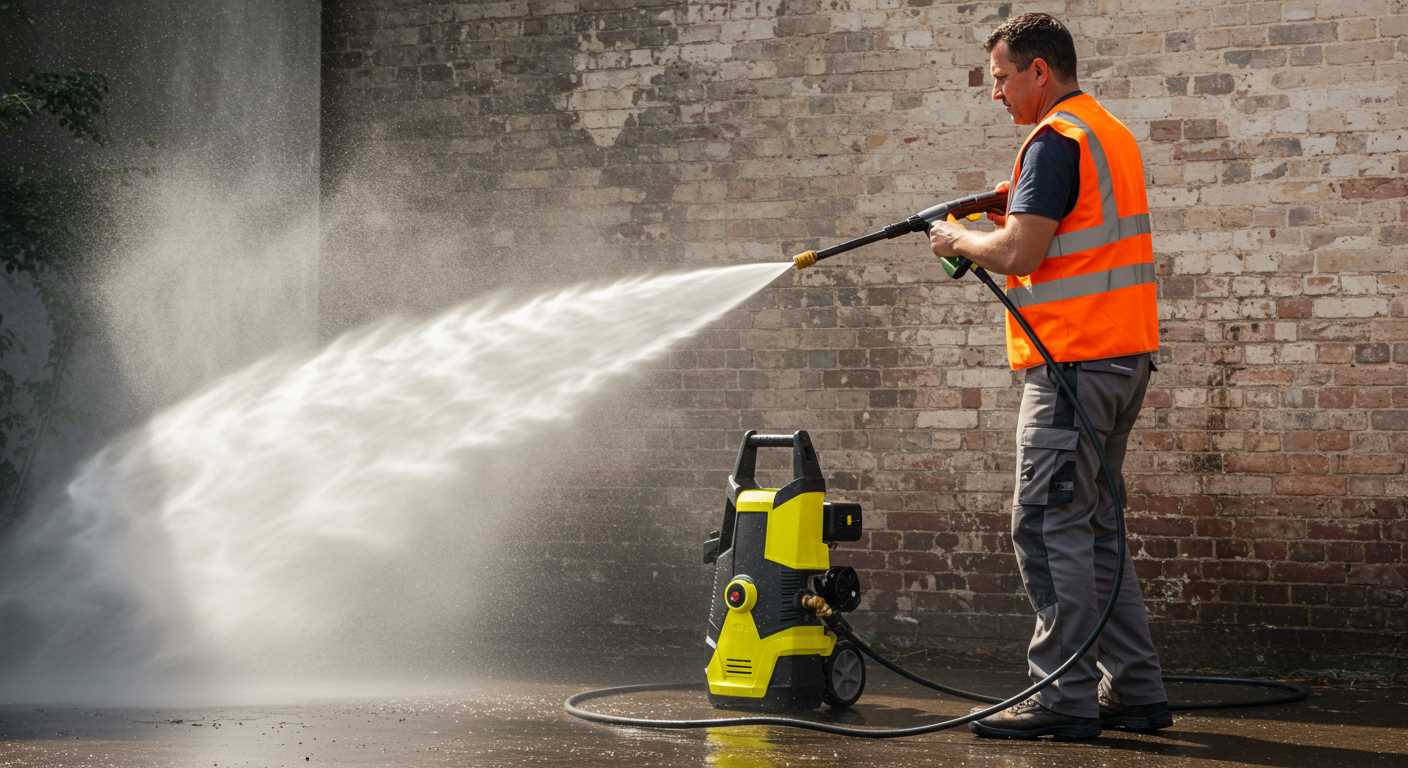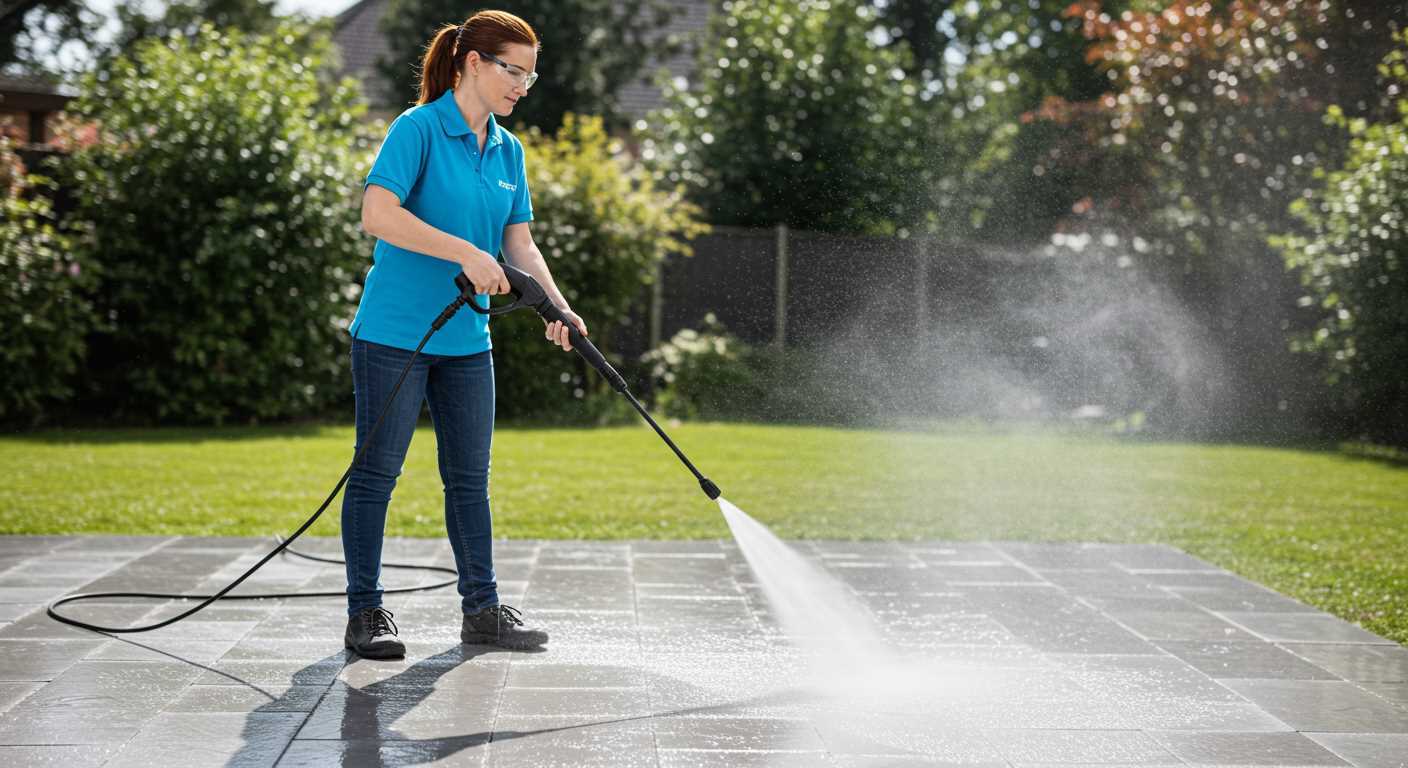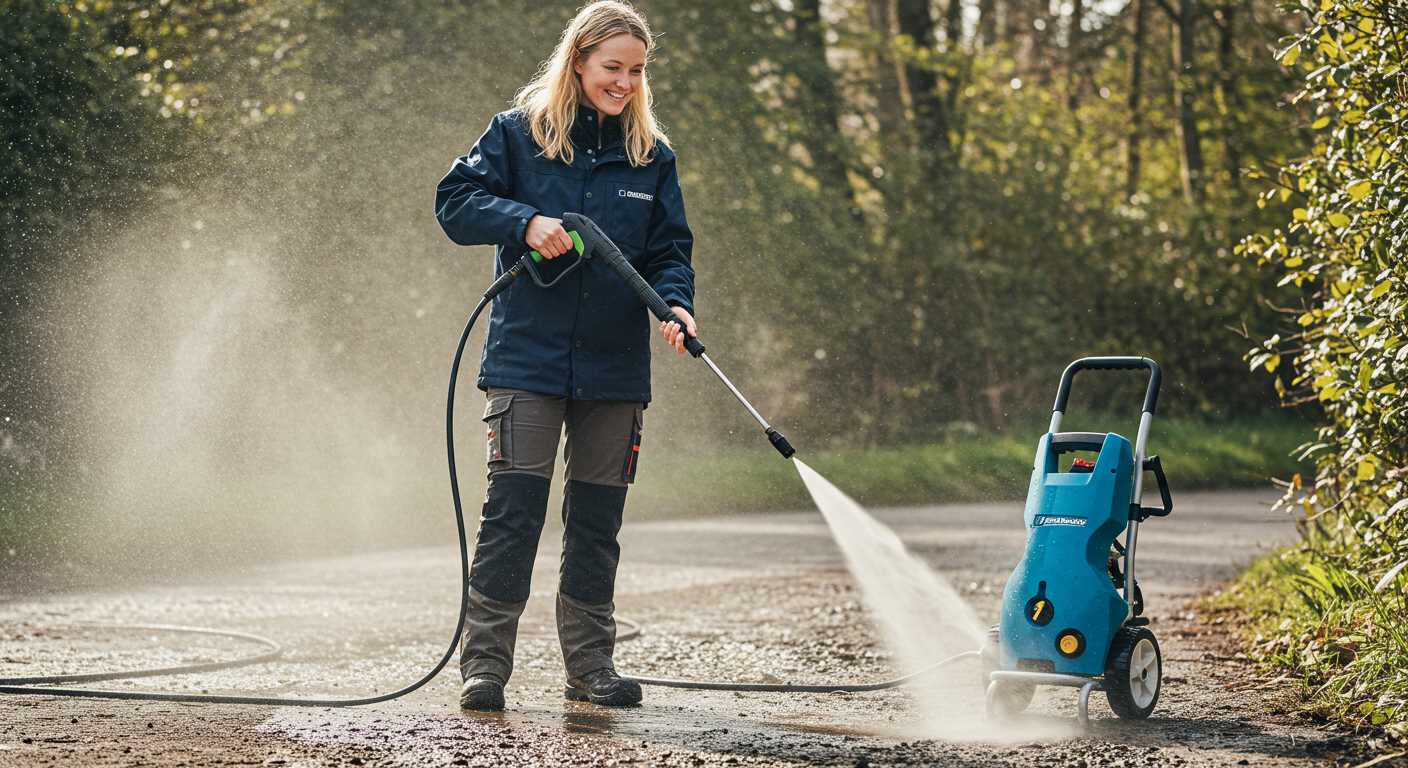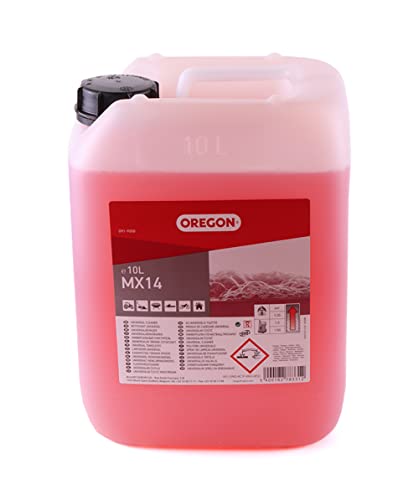

Inspect the inlet hose for any kinks or blockages. A clear pathway is crucial for optimal functioning, as any obstruction can severely limit the flow rate. Ensure that the hose connections are tight and free from leaks, as even minor gaps can lead to significant drops in output.
Next, examine the filter screen located at the water inlet. Debris accumulation here is common and can restrict water flow. Cleaning or replacing this component can often resolve low flow issues. If the filter appears damaged, consider obtaining a new one to restore functionality.
Check the nozzle and lance for clogs. A blocked nozzle can restrict the jet of water and lead to reduced pressure. Running water through the nozzle can usually clear it, but if that fails, employing a small wire to dislodge any debris can be effective. Likewise, adjust the nozzle setting, as using the incorrect one may also affect performance.
Inspect the pump for any signs of wear. Listen for unusual noises during operation, as these can indicate internal problems. If the pumping mechanism is damaged, replacement may be necessary. Regular maintenance can help prevent these issues, ensuring longevity and efficiency.
If all else fails, evaluating the motor’s functionality could reveal underlying electrical issues. Check for any blown fuses or tripped circuit breakers that might be interrupting power supply. It might be beneficial to consult the user manual for specific troubleshooting protocols pertinent to your model.
Repairing a Unit That Lacks Water Force
If no force is evident in your appliance, one immediate step involves checking the inlet filter for blockages. A clean filter allows water to flow freely, essential for generating sufficient force. Simply remove it and ensure it’s clear of debris.
Inspecting Hoses and Connections

A thorough examination of the hoses and connections is vital. Look for any signs of wear or damage. A pinhole or kink in a hose can dramatically decrease performance. In cases where hoses are compromised, replace them to restore functionality.
Pump and Nozzle Assessment
The efficiency of the pump significantly influences the output. Check if the pump is functioning correctly; strange noises could indicate issues. Additionally, verify that the nozzle is not obstructed. A blocked nozzle restricts water flow, diminishing efficacy. Clean or replace it as necessary.
| Component | Check for | Action |
|---|---|---|
| Inlet Filter | Debris buildup | Clean or replace |
| Hoses | Leaks or kinks | Inspect and replace |
| Pump | No unusual sounds | Check functionality |
| Nozzle | Blockages | Clean or replace |
Maintaining attention to these areas can significantly enhance the unit’s performance and restore necessary water output.
Checking the Water Supply and Connections

Ensure the water inlet is connected to a functioning tap. Verify the water supply is turned on fully. Inspect hoses for kinks or blockages that may hinder water flow. If the hose is damaged, replace it to restore normal operation.
Inspecting Hose Connections
Examine all fittings and connections between the tap and the equipment. Tighten any loose connections to prevent leaks. Look for any signs of wear or cracks in the hoses and fittings that could affect water intake.
Testing Water Flow
Detach the inlet hose from the machine and run the water for a few moments into a bucket. This will show if the flow is robust. If the water flow is weak, the issue might lie with the tap or an obstruction within the hose itself.
Inspecting the Hose for Kinks or Blockages
Begin by examining the hose for any signs of damage or kinks. These physical distortions can significantly impede water flow and reduce output. Lay the hose flat, stretching it out thoroughly to identify any bends or twists that could obstruct passage.
Next, inspect the entire length for blockages, such as dirt, debris, or mineral build-up. A blocked hose hinders performance, so using a garden hose to flush out any debris can be beneficial. If blockages persist, consider employing a wire brush or flexible cleaning tool to clear the interior.
Check the fittings on both ends of the hose for tightness and ensure no leaks are present. Leaky connections can mimic symptoms of low output, so make adjustments as necessary. If the hose itself appears cracked or worn, replacing it might be the most practical solution.
Lastly, I’ll suggest looking for any external factors that could constrict the hose’s path. Ensure that there are no heavy objects pressing down on it, as this can affect water delivery. After completing these steps, reconnect and test the device to assess changes in output force.
Examining the Nozzle for Clogs or Damage
Remove the nozzle and inspect it closely for any signs of blockage or wear. A clogged nozzle can significantly decrease water flow. Holding it up to a light source can reveal any debris or buildup obstructing the opening. If clear water doesn’t pass through effortlessly, you’ll need to clean it. A soft brush and a mixture of water and mild soap can work wonders. If that fails, a fine wire may help dislodge stubborn clogs.
Check for cracks or any physical damage to the nozzle. A compromised nozzle can lead to leaks or inadequate spray patterns. If you notice any imperfections, replacing the nozzle is often the best route to restore optimal performance, as it’s usually a cost-effective solution.
Lastly, consider the nozzle type. Using the wrong nozzle for a specific task can also lead to ineffective cleaning and pressure issues. Ensure the nozzle you are using is suitable for the surface you’re working on, as well as compatible with your equipment. Always have a variety of nozzles on hand to tackle different cleaning challenges more effectively.
Testing the Pump Functionality

Detach the water supply and start the unit to verify the pump’s operation. Observe if any water leaks from the pump; this indicates a malfunction. If no water flows, check the pump’s inlet for blockages. You may need to disassemble the pump to inspect internal components carefully. Ensure the pump is free of debris or damaged seals that could hinder performance.
Use a multimeter to measure voltage at the motor terminals while the unit runs. If the readings are below the specified value, there may be an electrical issue that can lead to diminished pump efficiency. Also, check the thermal overload protection; if tripped, allow the unit to cool down before retrying.
Run the unit for a short period and listen for any unusual noises, such as grinding or irregular sounds, which could indicate internal damage. Evaluate the pump for any signs of wear, such as cracked housing or loose fittings, and replace damaged parts as necessary to restore functionality. Keep an eye out for leaks from the discharge side, as this can also impact overall output.
Assessing the Unloader Valve for Proper Operation
Begin by locating the unloader valve, typically situated on the pump assembly. This component regulates the pressure by diverting water flow back to the inlet when the trigger is not engaged.
Next, check for any visible damage or signs of wear. A cracked or damaged unloader can lead to leaks, resulting in inconsistent flow and insufficient force.
Follow these steps to assess functionality:
- Start the unit and pull the trigger. Water should flow steadily.
- Release the trigger. The water should stop, indicating the unloader is engaging correctly.
- If water continues to flow, the valve may be stuck open or require adjustment.
For further verification, consider the following:
- Inspect the adjustment screw on the unloader. Ensure it is set to the manufacturer’s specifications.
- Test the spring inside the valve for resilience. A weak spring will fail to maintain the necessary pressure.
- Clean any debris around the unloader, which can impede its operation.
If the problem persists, replacing the unloader is advisable. Ensure you select an appropriate replacement that matches the unit’s specifications.
Reviewing the Motor or Engine Performance
Begin by checking for unusual noises or vibrations during operation. Any odd sounds may indicate internal issues that require attention. Ensure the motor runs smoothly without stalling, as this could point to fuel or air supply problems.
Key Areas to Inspect
- Fuel System: If your device uses petrol, make sure the fuel is fresh and clean. Old or contaminated fuel can lead to poor performance. Consider replacing it if it appears discoloured or stale.
- Air Filter: A clogged air filter restricts airflow, affecting engine performance. Clean or replace the filter as necessary to ensure optimal operation.
- Spark Plug: Examine the spark plug for wear or carbon build-up. A faulty plug can lead to weak ignition or even engine misfires. Replace it if you notice any significant deterioration.
Electrical Components
- Battery: If using an electric model, check the battery charge or connections. A weak battery may fail to provide adequate power, impacting overall functionality.
- Cables and Connections: Inspect for any frayed wires or loose connections that could disrupt electrical flow. Repair or replace damaged components for reliable performance.
Testing the motor’s output under load can provide insights into its condition. Use a multimeter to measure voltage and current during operation. Low readings can hint at underlying issues that necessitate further investigation.







